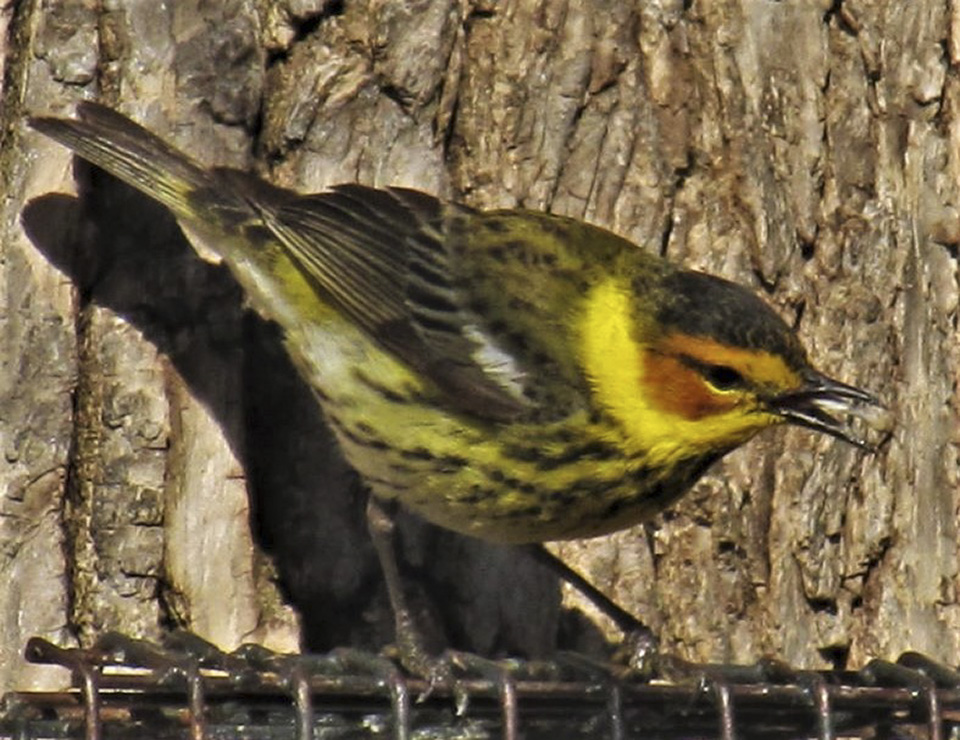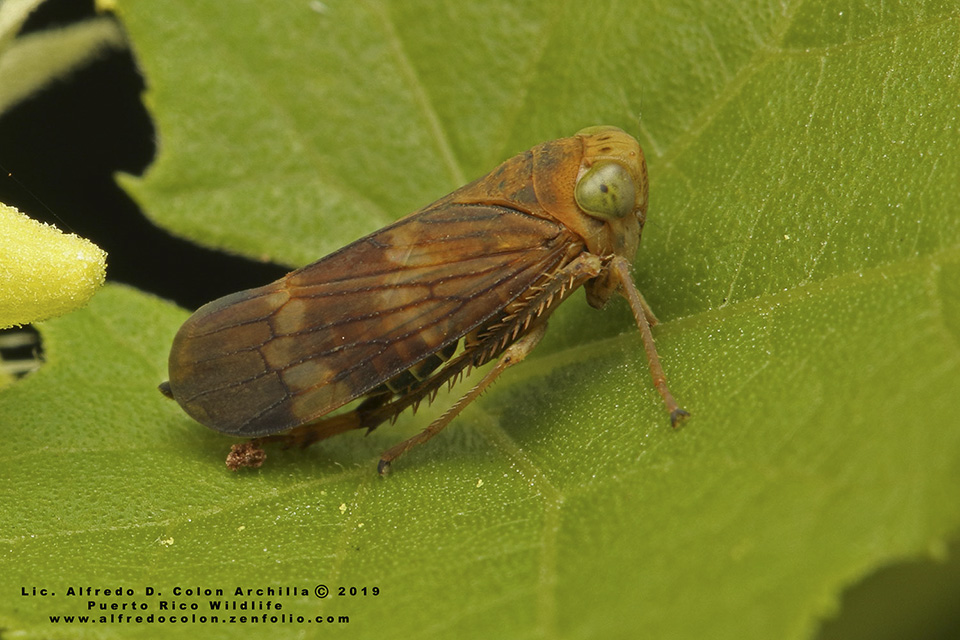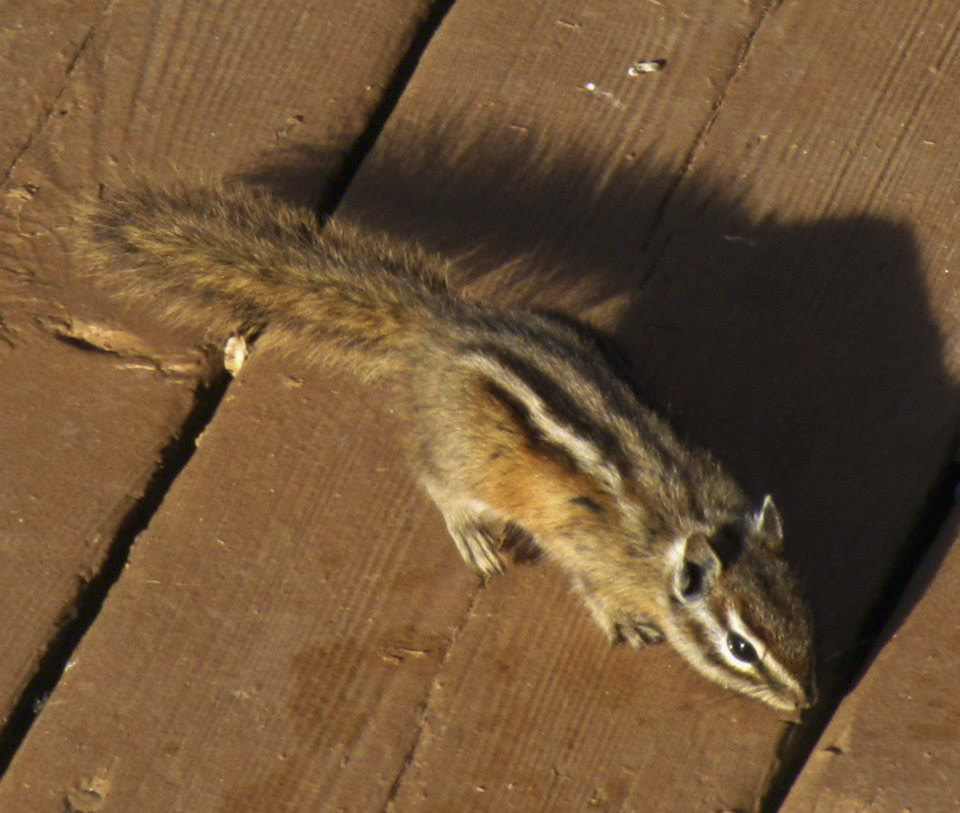
Cape May Warbler (Setophaga tigrina) is a small perching bird but a medium-sized New World Warbler. Its breeds in Canada from Nova Scotia to the Northwest Territories, and in the United States in northern New England and the Upper Midwest. It builds its nest in a mature forest near the top of a tall spruce or balsam fir tree usually near the trunk. In Minnesota it breeds in Arrowhead region. It winters in the West Indies. It is an uncommon migrant in most of the state in May and from early August through October. It is rare in the west. It feeds on insects, especially spruce budworm, and on flower nectar and fruit juices.
Cape May Warbler adult is about 5″ in length and has a wingspan of about 8″. On the breeding male, the upper parts are dark olive green, the chin, sides of the neck (“collar”), and rump are yellow. There is a large chestnut-brown ear patch and a dark eye line. The bill is thin, dark, and slightly curved downward. The breast and flanks are yellow with dark stripes that converge on the throat. The undertail coverts are white. On each wing there is a distinct white patch. The tail is short. The female is paler overall and has two thin white wing patches. The crown is olive-gray and there is a grayish cheek patch.


